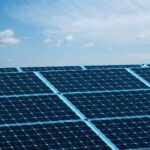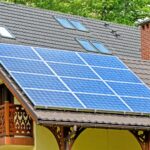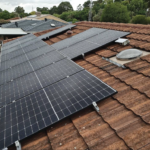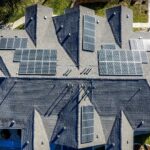Solar Racking System Perth - The Racking System is frequently underestimated, although it is an essential component of any Solar System, particularly in Perth, where strong winds and hot days are common. A solar tracking system, also known as a photovoltaic mounting system, is used to secure solar panels to roof surfaces. The system is made to be easily installed on existing structures and rooftops. You'll usually only see the sparkling new panels on your property once a solar panel system is installed. The solar racking beneath them, on the other hand, is an essential component of any solar system.
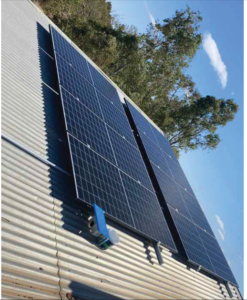
TDG SOLAR is a Perth-based high-quality commercial and residential solar racking company. Our systems are pre-assembled with unique spring-loaded rail clips and clamps, allowing for quick panel installation. We collaborate with customers to provide engineering-certified solar racking that is suitable for any installation. If you wish to install our high-quality, Australian-supported products in Perth, call TDG SOLAR today on 1300TDGSOL (1300 834 765).
In the realm of energy evolution, solar power is reshaping the dynamics of fueling our residences and enterprises. With an escalating demand for sustainable energy solutions, an increasing multitude is embracing solar energy. A pivotal facet within the solar energy infrastructure, often overshadowed yet wielding significant influence on efficiency and efficacy, is the solar racking system.
Table of Contents
What Exactly is Solar Racking, and Why is it Necessary??
When solar panels are put on a roof, only the panels are visible. However, the solar panels are held in place by a framework beneath the panels. Solar racking or solar mounting is the term for this structure. As a result, solar racking is a crucial component of any solar installation since it connects the solar panel system to the roof. Heavy winds and harsh temperatures must not be a problem for the solar racking system.
Furthermore, the solar racking system is in charge of transferring the weight of the solar panels to the roof structure, and it must ensure that the weight is spread rather than concentrated in a few locations due to the roof's static. The majority of the time, these mounting systems are made of aluminum due to the material's minimal weight while remaining sturdy, resistant, and lasting.
Components Solar Racking Systems:
All racking systems are not created equal. However, most solar racking solutions have certain components in common:
Flashings:
A home roof with solar might become a leaking disaster if it isn't flashed. Flashing is the material used to prevent water from leaking into a roof when holes are made for vent pipes or solar installations. Although aluminum flashing is the most popular, there have been advancements in this area of the roofing business. There are several different types of flashings in the Solar racking system, including:
- Aluminum Flashing
- Galvanized Flashing
- Rubber Flashing
- Elevated Flashing
- Microflashing
Whatever form of flashing is used for a solar project, it's important to make sure the installation complies with all applicable building requirements. Selecting the appropriate flashing is crucial, but ensuring that it is placed correctly provides a waterproof solar project.
Mounts:
Flush mounts are a cost-effective and straightforward alternative for most roof-mounted solar panel installations. They are usually not adjustable and are meant to keep the solar panels at a constant height above the surface to which they are attached.
- Ground mounts - This allows you to put solar panels on your premises at any ground level.
- Pole mounts - are an excellent option for individuals who do not require a roof installation.
Regardless of the design you choose, your mount will keep your solar investment safe and secure.
Rails:
Rails, which are the component of solar racking that your solar panels lie directly on top of, are held up by mounts. They are usually lengthy aluminum rails that are put on your roof level either vertically or horizontally. In Solar Racking Systems, there are two types of rails:
- Standard Rail Mounted Solar -A flashing is used to attach to the existing rooftop in this approach. The flashing is comparable to that found on a typical roof vent.
- Rail-less Mounted Solar - Rather than using rails, most systems employ several attachment points on the rooftop and attach to each panel independently.
Clamp:
Solar panels are added on top of the racking after it has been installed. Clamps secure the panels to the racks, ensuring that they remain in position. The majority of the time, mid-clamps and end-clamps are utilized to install a solar system on a roof. End-clamps go on the end of solar arrays and can only hold solar panels on one side, whereas mid-clamps are useful for the space between panels because they can hold panels on both sides.
Deciphering the Solar Racking System
Unveiling the Cornerstone of Solar Installations - A solar racking system serves as the structural bedrock, firmly anchoring solar panels. Meticulously engineered to optimize solar exposure, it ensures the ideal inclination for harnessing sunlight. Diverse in types, each variant is custom-tailored to meet specific requisites and adapt to varying environments.
Merits of Solar Racking Systems
Beyond Stability: Unleashing the Complete Potential of Solar Power - Solar racking systems transcend mere stability, actively contributing to heightened energy efficiency by enabling panels to dynamically trace the sun's trajectory throughout the day. Moreover, these systems prove economically prudent, offering a sustainable resolution with long-term dividends. Individuals with an eco-conscious inclination applaud the diminished carbon footprint associated with solar energy.
How much does solar racking cost?
The solar racking system is a significant component of any solar system, yet it accounts for just a small portion of the total cost of installation. If a flat roof can support a big load, the solar racking system will be far less expensive than a pitched roof. However, if the flat roof must be prepared to support the weight of the solar panels, the cost is nearly equal to, if not more than, that of a pitched roof system.
According to the National Renewable Energy Laboratory (NREL), the racking system costs around $0.10 per Watt (W), which indicates that racking accounts for about 3% of the total cost of a solar system. There is also the option of purchasing a used system, as even though the solar panels are obsolete, the racking system may still be in good working order.
Why choose TDG SOLAR for Solar Racking System Perth?
TDG SOLAR is now Perth's most popular Clean Energy Council (CEC) authorized product distributor. The spark that keeps our engine running is our company's innovation. Our continuing expansion as a leader in the solar industry is driven by innovation. We are constantly aiming for quality, which translates to setting higher standards than the competition. We also assure the future of our employees, as well as profitability, growth, and a brand for the long term.
Our goal is to make solar energy a realistic and inexpensive choice for hundreds of thousands of people in Western Australia's homes, communities, companies, and schools. Our product and service will provide a trouble-free green future for the rest of your life while also saving you a lot of money.
TDG SOLAR Australia’s range of solar racking systems:
-
- A flat-to-roof universal rooftop racking system that removes the need for bespoke cutting and lowers installation time in half.
- A solar tripod mounting device that can be customized to fit a variety of roof types.
- For use in greenfield projects, a variety of pre-assembled corrosion-resistant ground mounting systems are available.
Get the best guidance and take a step in the right direction. Install a solar system with TDG SOLAR and join the thousands of delighted customers around Australia.
Contact Details
Name – TDG SOLAR
Address – 1/48 Vinnicombe Drive, Canning Vale WA 6155
Phone number – 1300TDGSOL (1300 834 765)
Solar Racking System Perth - FAQs
Question 1: What factors influence the amount of solar energy received?
Answer 1: The amount of solar energy (radiation) available varies depending on the time of year, day of the week, and latitude of the generation location. The amount of energy generated by the system can fluctuate according to:
- The concentration of dust and water vapor in the atmosphere,
- How much cloud cover is there?
- Any shaded solar panels
- As well as the quality of the solar modules
- In our solar power system builder, you may discover more about solar radiation levels in your location.
Question 2: Does the orientation of the roof make a difference?
Answer 2: Without a doubt. For example, a system with solar panels facing south will produce significantly less energy than one with panels facing north. However, depending on the installation scenario, east/west setups can be a suitable solution.
Question 3: Is it possible to put a solar system on an asbestos roof?
Answer 3: No, we cannot put our team members in potentially unsafe situations due to asbestos, regardless of whether your roof is physically suitable for a solar system. All solar installers have the right to refuse, and we recommend that you replace your roof before going solar.

